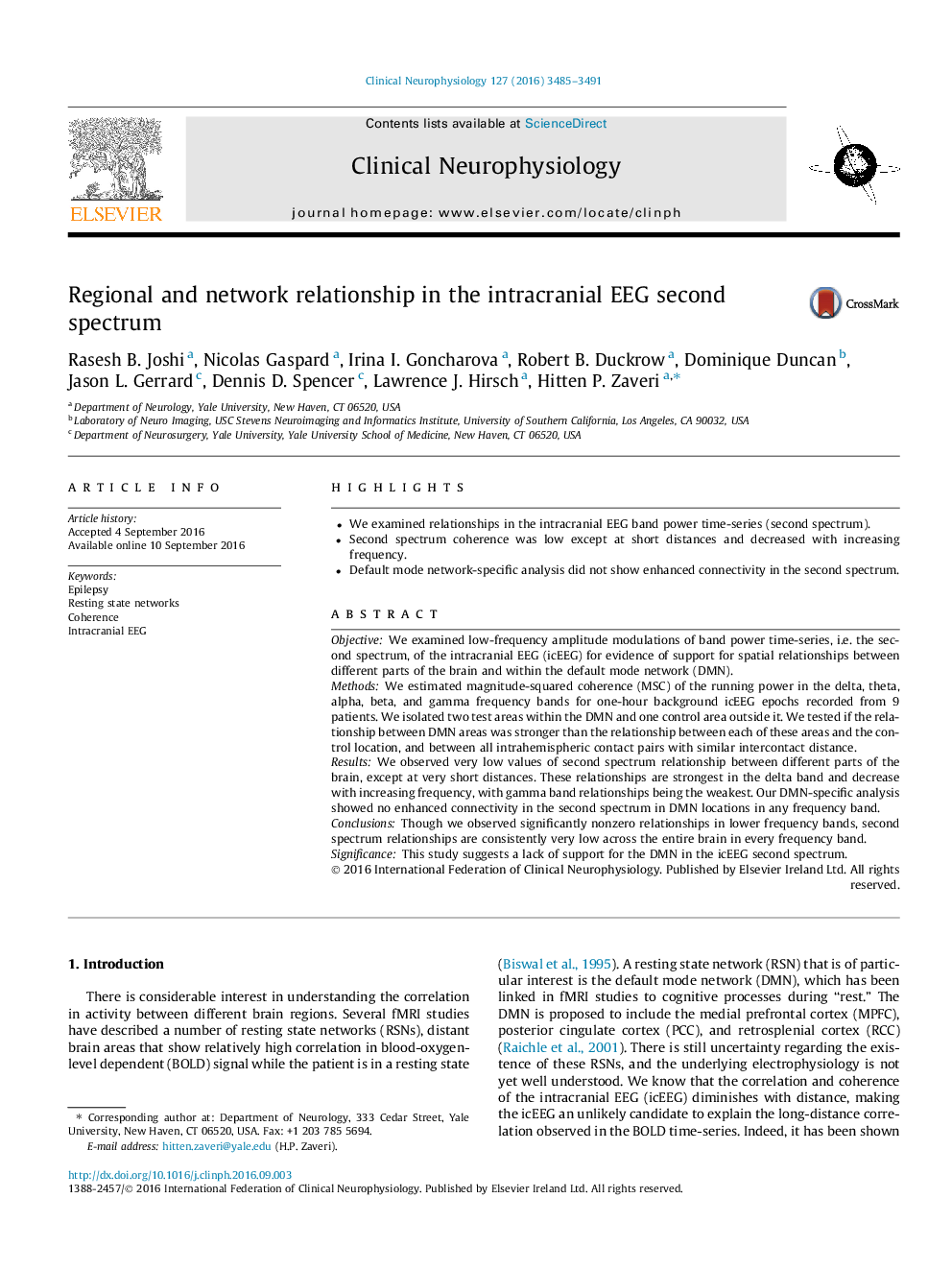| Article ID | Journal | Published Year | Pages | File Type |
|---|---|---|---|---|
| 5627565 | Clinical Neurophysiology | 2016 | 7 Pages |
â¢We examined relationships in the intracranial EEG band power time-series (second spectrum).â¢Second spectrum coherence was low except at short distances and decreased with increasing frequency.â¢Default mode network-specific analysis did not show enhanced connectivity in the second spectrum.
ObjectiveWe examined low-frequency amplitude modulations of band power time-series, i.e. the second spectrum, of the intracranial EEG (icEEG) for evidence of support for spatial relationships between different parts of the brain and within the default mode network (DMN).MethodsWe estimated magnitude-squared coherence (MSC) of the running power in the delta, theta, alpha, beta, and gamma frequency bands for one-hour background icEEG epochs recorded from 9 patients. We isolated two test areas within the DMN and one control area outside it. We tested if the relationship between DMN areas was stronger than the relationship between each of these areas and the control location, and between all intrahemispheric contact pairs with similar intercontact distance.ResultsWe observed very low values of second spectrum relationship between different parts of the brain, except at very short distances. These relationships are strongest in the delta band and decrease with increasing frequency, with gamma band relationships being the weakest. Our DMN-specific analysis showed no enhanced connectivity in the second spectrum in DMN locations in any frequency band.ConclusionsThough we observed significantly nonzero relationships in lower frequency bands, second spectrum relationships are consistently very low across the entire brain in every frequency band.SignificanceThis study suggests a lack of support for the DMN in the icEEG second spectrum.
